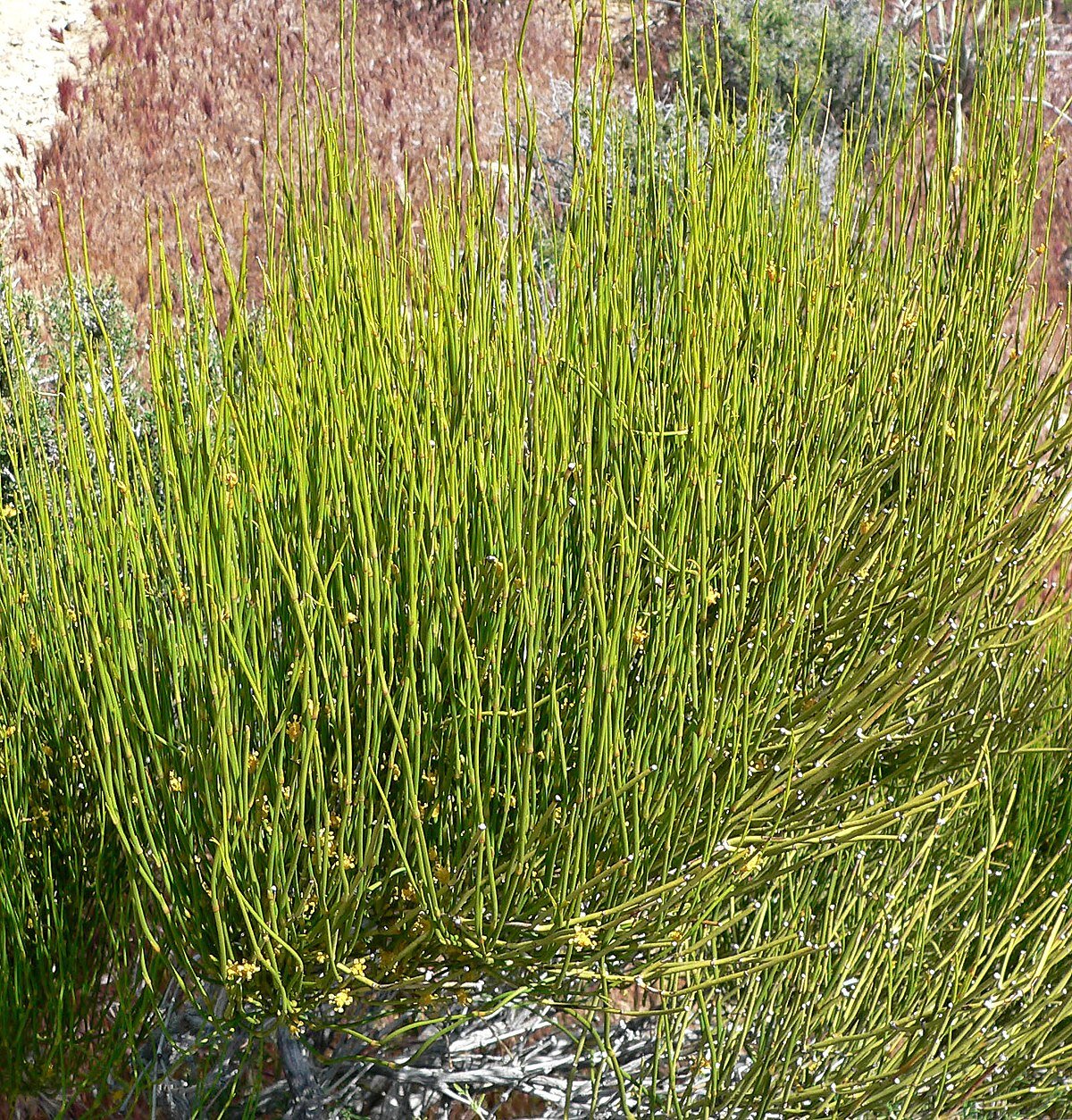Stronger than coffee
Ephedra viridis
The genus Ephedra contains about 70 species worldwide, often in arid lands, but is lacking in Australia. They are known by a variety of common names like joint-fir, joint-pine, Mormon tea, or Navajo tea. The most world-famous Ephedra is Ephedra sinica, native to Russia, Mongolia, and China, and is used throughout the world as medication for allergies, as a powerful stimulant, and for weight loss, amongst many other uses. Ephedrine is the compound derived from Ephedra plants, and is mostly found in allergy medicines which are closely regulated to prevent being converted into illegal drugs.
Ephedra has a long history in our region. There are many species native to Arizona, and they were used medicinally by the indigenous residents. Despite being forbidden to consume caffeinated products like coffee, tea, and soda, Mormon pioneers had a history of use (and abuse) of the plant as a tea.
A male “cone” on Ephedra aspera
Ecologically, ephedra is an important soil stabilizer. Plants also provide shelter for birds and other small animals, and it is a larval food plant for the bilobed looper moth (Megalographa biloba). They are ancient conifers and are dioecious (separate male and female plants).
The joints of Ephedra aspera
As a landscape plant, ephedra is very interesting. It is something of a succulent plant with photosynthetic, green stems. Evolutionarily speaking, they are aligned with an ancient group of plants which evolved as early as the cretaceous era, and includes the world famous and bizarre looking Welwitschia mirabilis.
Ephedra’s nearest relative, the bizarre Welwitschia mirabilis
Ephedra grows best in full sun with good drainage. Once established, they are incredibly drought-tolerant (the native species). Most are hardy to at least the single digits °F. You don’t really need both a male and female unless your aim is to get seeds. They need very little maintenance, outside of the occasional removal of any damaged or dead stems. They get almost no pests, save for the already mentioned moth larvae, which doesn’t cause any lasting damage. They usually grow about 3-4’ tall and wide, though a very old and happy plant can reach 6’ high or even larger.



